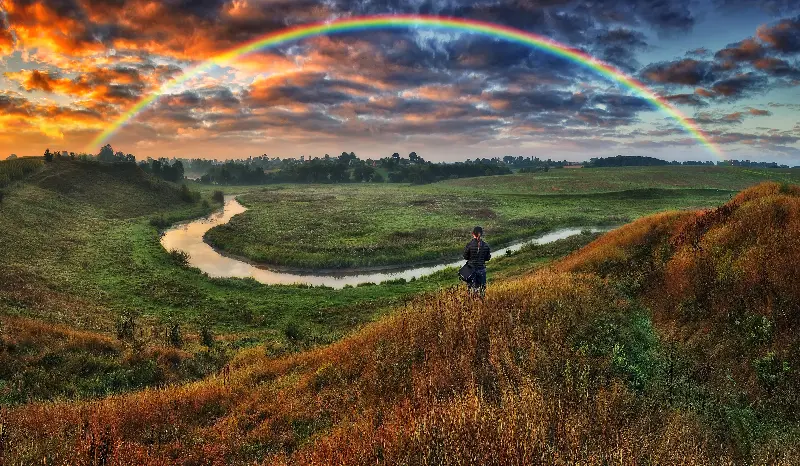
Take a moment to recall the last time you saw a rainbow—did you ever wonder why only certain conditions create these magical arches of colour? While they may seem like fleeting brushes of luck, rainbows are dazzling masterpieces forged by a precise recipe of sunlight, water, and your very own eyes.
Why the Sun’s Angle Is the Magic Touch
Rainbows don’t just appear at random. The sun’s position in the sky acts like a heavenly dial, deciding whether the rainbow show will begin. The magic happens when the sun is low on the horizon—think of early morning or late afternoon. At this time, sunlight enters the raindrops at an angle, typically less than 42 degrees from where you’re standing.
This angle isn’t arbitrary; it’s the critical factor behind rainbow formation. When the sun climbs higher in the sky, the light simply passes overhead, missing the mark for that perfect refraction. So, if you’re ever eager for a rainbow sighting, remember: the lower the sun, the likelier you’ll see nature’s own spectrum painted across the sky.
Raindrops: The Microscopic Artists Behind the Curtain
Beyond the sun, the raindrops themselves put on a subtle—and crucial—performance. Not all raindrops create rainbow effects; it’s their size that matters most.
- Small droplets (think mist or drizzle): These tend to produce paler, less vivid rainbows with blurred bands of colour.
- Larger droplets (after a heavy shower): They’re the showstoppers, creating brighter, more vividly defined rainbows.
Why? As light enters a droplet, it bends (refraction), bounces off the back (internal reflection), and exits, bending again. Larger droplets sharpen this effect, separating colours with crispness and clarity.
Sometimes, secondary rainbows appear—fainter and with reversed colours—just outside the main arch. These form when light reflects twice inside the droplet. Look closely, and you might even spot up to seven distinct colours, though red and violet are usually the easiest to notice.

Your Eyes: The Unsung Heroes of the Rainbow
You, dear reader, are the final, essential ingredient in this recipe. Rainbows are not hovering objects in the sky, but an optical phenomenon—meaning they exist only in your line of sight. When you spy a rainbow, you’re standing at the exact spot where sunlight, droplets, and your eyes unite to complete this vibrant illusion.
- Everyone sees their own unique rainbow; even a friend a few metres away is looking at a different set of droplets reflecting light to their eyes.
- The semi-circular arc forms because there’s a fixed 42-degree angle between the light’s entry and exit, relative to your viewpoint.
It’s a mesmerising reminder that rainbows are less about weather, and more about perspective.
Fun Rainbow Facts to Brighten Your Day
- Rainbows are full circles, but the ground gets in the way—from a plane, you might spot the full ring!
- “Roy G. Biv” is a helpful way to remember the seven visible colours: Red, Orange, Yellow, Green, Blue, Indigo, Violet.
- Some people have a rare condition called tetrachromacy, allowing them to see more hues within a rainbow than usual.
Each rainbow is personal—shaped by science and revealed uniquely through your own eyes.

Isn’t it extraordinary that a simple mixture of water, sunshine, and where you happen to be standing can turn an ordinary moment into a spectacle of colour? The next time you catch sight of nature’s rainbow canvas, linger and wonder—what other marvels are waiting to be revealed when the world’s elements, and your senses, work together?
